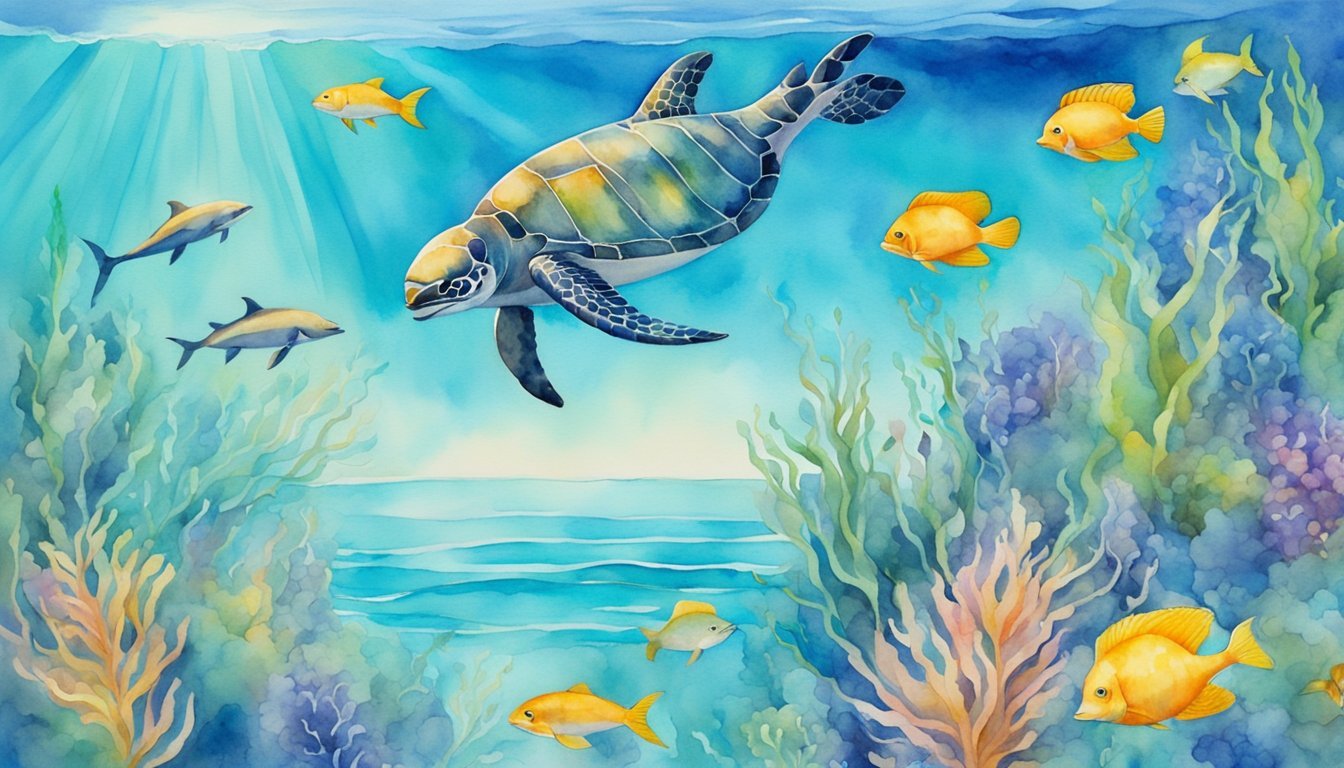Exploring Marine Life
Diverse Habitats and the Ocean Floor
The ocean is home to a wide variety of animals, from the tiniest single-celled plankton to the largest animal on Earth, the blue whale1. These creatures reside in diverse habitats, taking us to the depths of the ocean floor. In fact, the deepest living fish ever found is a snailfish discovered at 27,000 feet below sea level.
The Coral Paradise
Coral reefs, often referred to as the “rainforests of the sea,” host an impressive collection of marine life. These underwater ecosystems are bustling with activity, and they support more than 25% of all marine species2. Coral reefs provide shelter and food to a multitude of fish, turtles, and invertebrates. In addition to their astounding biodiversity, corals themselves are fascinating as well. They are actually colonies of tiny animals called polyps that build the calcium carbonate structure where they live.
Marine Mammals and Other Sea Creatures
Marine mammals are a diverse group, encompassing whales, dolphins, porpoises, seals, sea lions, walruses, and even polar bears3. Among these creatures are the cetaceans, which include baleen whales like the blue whale and humpback whale, as well as dolphins and porpoises. These intelligent and social animals display remarkable behaviors, such as cooperative hunting and communication using a variety of clicks and songs4.
The ocean is also home to various species of sharks and sea turtles. Turtles play an essential role in maintaining the balance of marine ecosystems, as they feed on seagrasses and jellyfish5. Sharks, on the other hand, are apex predators that keep the populations of their prey in check, thus preserving the health of the ecosystem as a whole.
Life in the Water Column

The Food Chain: From Plankton to Predators
The ocean’s food chain begins with microscopic organisms like algae and plankton. Various types of plankton serve as the foundation for marine food chains, with larger organisms such as krill and small crustaceans feeding on them. In turn, these smaller organisms are preyed upon by larger marine animals, such as fish, seabirds, and marine mammals.
- Producers: Algae and other microorganisms turn sunlight into energy through photosynthesis.
- Primary consumers: Tiny, filter-feeding animals like zooplankton, krill, and some jellyfish feed on algae and other microorganisms, converting the energy from producers into a form that can be consumed by larger animals.
- Secondary consumers: Larger marine life such as small fish, starfish, and some crustaceans (e.g., shrimp and crabs) feed on zooplankton and other small creatures.
- Tertiary consumers: Predatory fish, seabirds, and marine mammals like seals consume smaller fish and crustaceans.
- Apex predators: The top of the food chain includes animals like sharks, orcas, and sperm whales, which feed on large fish and marine mammals.
Adaptations: How Ocean Animals Thrive
The ocean is a dynamic environment, with a wide range of habitats and varying light conditions and climates. To survive and thrive in this challenging environment, many marine animals have developed fascinating adaptations.
- Bioluminescence: Some creatures in the deep ocean, where sunlight is scarce, can generate their own light to attract prey or communicate with other animals. For example, the deep-sea anglerfish uses a bioluminescent lure to attract small fish and squid in the darkness.
- Pressure resistance: Some marine creatures, like the Pseudoliparis swirei snailfish, can withstand extreme pressure, allowing them to survive in the deepest parts of the ocean.
- Camouflage: Many marine animals have evolved to blend in with their surroundings to avoid predators or sneak up on prey. For example, some species of squid and octopus can change color and texture to match their environment.
These are just a few examples of the amazing adaptations marine animals have developed to survive and thrive in their unique ocean habitats.

